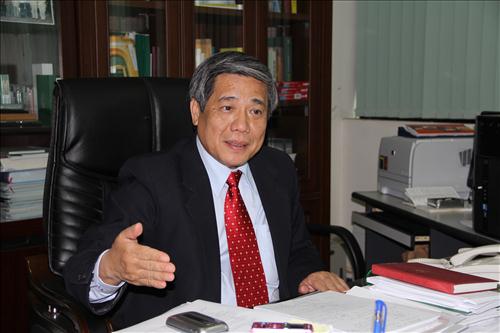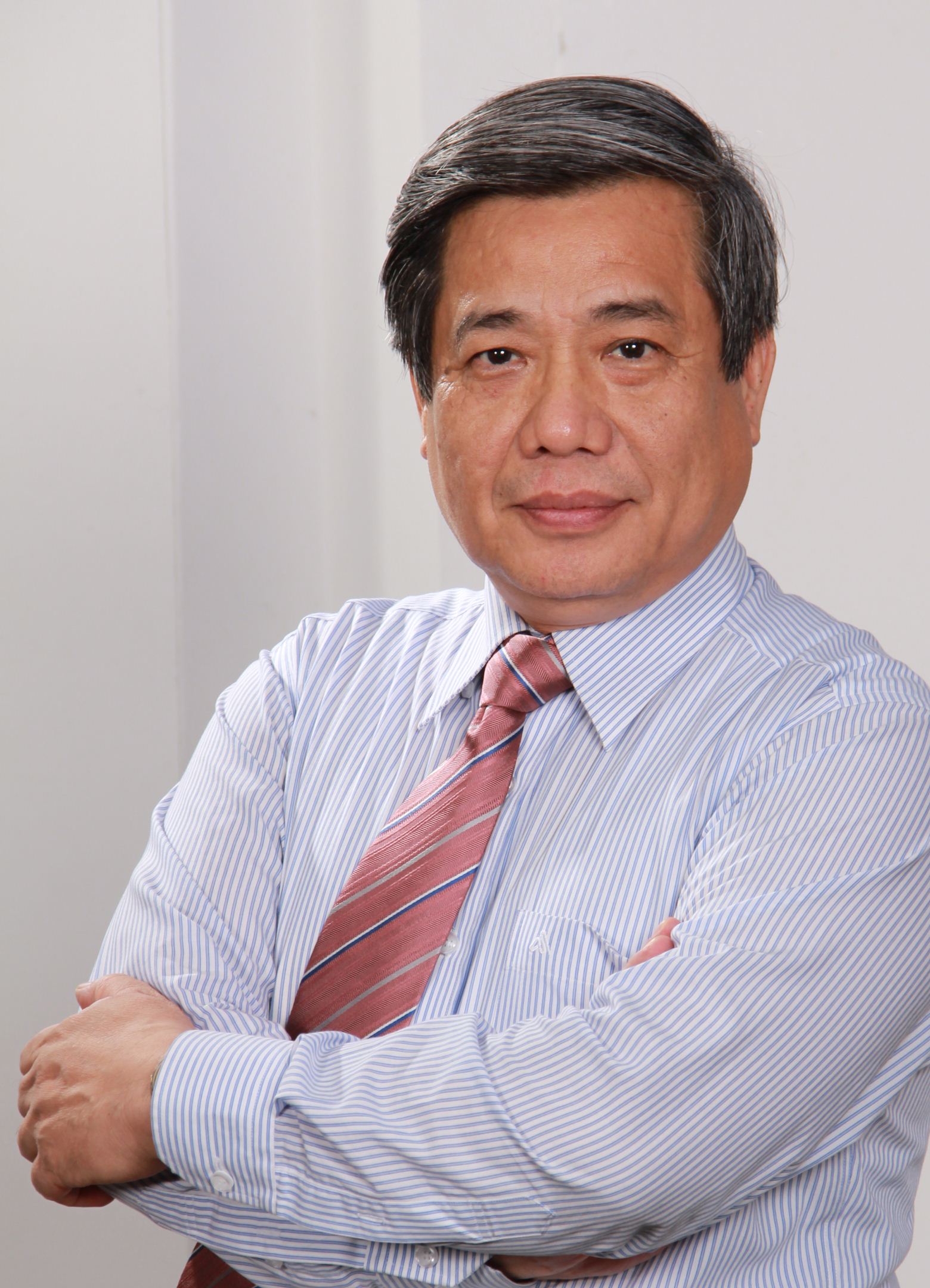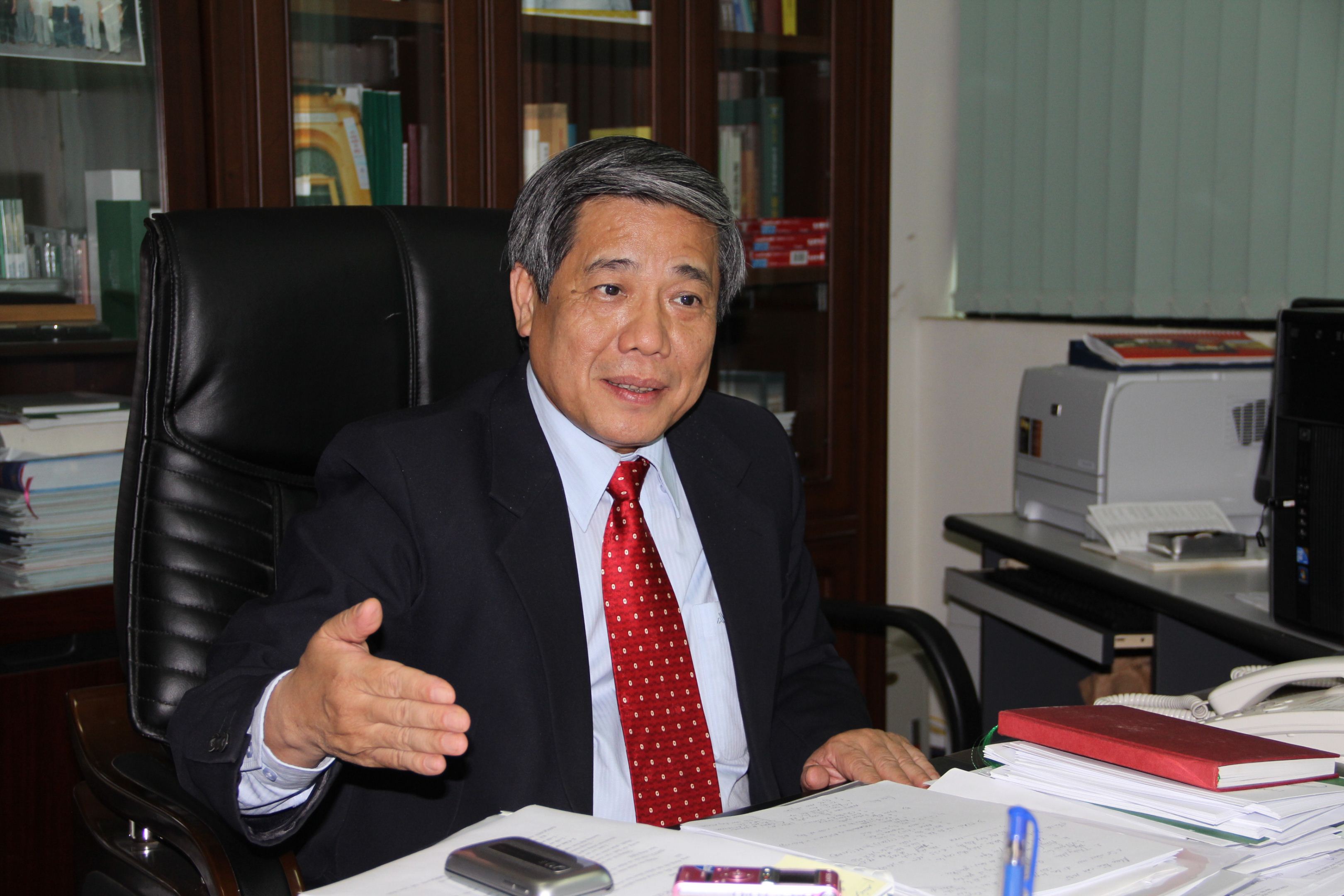

Prof. Dr. Vu Minh Giang - Chairman of the Science and Training Council, Vietnam National University, Hanoi
Indochina University - a proud milestone
- How do you evaluate the birth of Indochina University founded by France in 1906?
To evaluate this, we need to mention the historical context of that period. Vietnam is a nation with a tradition of studiousness and is considered to be gifted in studying, taking exams, and passing exams. The Temple of Literature, established in the 11th century, is a famous symbol of Confucian education. Many people from the working class, but thanks to their talents, discovered through exams, had the opportunity to join the ranks of policy makers of the government at all levels. However, the feudal regime of Vietnam at the end of the Nguyen Dynasty, due to the conservative policies of the court, caused the country to fall into a state of crisis, lagging behind, unable to catch up with the world. The country weakened and lost its independence after the capital fell in 1885.
Becoming a French colony was a misfortune for the nation, which fell into slavery and lost its minimum freedoms. Meanwhile, the colonial government always cared for the interests of the motherland and the French. That was the nature of the colonial regime. However, it would be wrong to apply a view in the way of “Plain book negation", meaning that anything made under colonialism, by the colonial government, is harmful and must be criticized.
At the end of the 19th century, our country was going into a dead end of development due to the backward and conservative policies of the feudal government, the impacts, even if unconscious, of European civilization also made Vietnamese society change in a positive direction. That was the change in the type of state organization according to bourgeois democratic institutions, or the modern movements in society, in the cultural and social life that were impacted and spread under the influence of European civilization.
The Indochina University was established in that context. It was the first modern university institution in Vietnam. The French established the Indochina University primarily with the aim of building a higher education institution to serve the need to train a team of indigenous intellectuals who could participate in their governing apparatus. But in a broader sense, building the Indochina University also had the meaning of civilizing and improving the level of French Indochina.
Another factor that led to this decision was that in the early 20th century, before Japan's victory in the Russo-Japanese War (1905), the Vietnamese people seemed to see the light of the path to national liberation from the Duy Tan movement, learning from the Japanese example. Hundreds of outstanding young people were organized by patriotic scholars to be sent to Japan to study. The French realized that the Vietnamese people's need for education was very high, so they further urged them to build a modern training facility following the Western model, completely breaking with the thousand-year-old training tradition in Vietnam.
The trend of forming Western-style university models in Asia at this stage is inevitable. For example, Malaysia learns the British university model, the Philippines learns the Spanish university model, then China and Korea... Up to now, all of these countries consider Western-style universities as a source of pride. They consider it the pinnacle of intelligence, a change to keep up with the trend of the times.
- Professor, what direct contributions has Indochina University made to the country's education?
Indochina University is the place where many famous scientists come to teach and research such as Dr. Alexandre Yersin, a famous expert in epidemiology with scientific works of world stature. From here, many modern academic fields have been built for Vietnam such as Medicine, Pharmacy, Fine Arts, Law, etc. These professions have made great contributions to the construction of many large and rich research fields in Vietnam later. For example, the medical field in Vietnam has a reputation in the world medical community with names such as Ton That Tung, Ton That Bach. Vietnamese schools of painting with names such as Nguyen Gia Tri, Bui Xuan Phai, To Ngoc Van, etc. Therefore, it can be affirmed that the historical significance of Indochina University is not only in its position as the first university institution, but it also directly contributes to the construction and development of a number of new academic fields in Vietnam later.
Another contribution that cannot be ignored of the Indochina University is that from here, there were outstanding individuals who made great contributions to the Vietnamese Revolution such as: Dang Xuan Khu, who was a student of the School of Commerce of the Indochina University, later became the General Secretary of the Vietnam Workers' Party; Vo Nguyen Giap - a student of the Faculty of Law of the Indochina University, later became the General Commander-in-Chief of the Vietnam People's Army... This tradition was continued by the following generations. During the resistance war against France, students of Medicine and Pharmacy who evacuated to the resistance zone made great contributions to the resistance. Later, when Hanoi University of Science was established, it absorbed the entire legacy of the Indochina University, and became the leading bird in Vietnamese education, teaching all basic sciences, providing human resources for many universities, research institutes and other scientific and educational organizations.
With all those meanings, Indochina University is considered the beginning of modern Vietnamese education, worthy of being a milestone in the development process of Vietnamese education.
- As a university built by the French, but later became the predecessor of the leading universities in Vietnam in later periods, what do you think about this?
There is an event that should be mentioned: at the end of 1945, after the Democratic Republic of Vietnam was born in a difficult context, with hundreds of thousands of tasks, President Ho still took the time to visit and attend the opening ceremony of the Indochina University, which had now changed its name to the Vietnam National University. This was an event of special significance not only to the National University but also to the revolutionary cause and the nation. The fact that the President of the Revolutionary Government came to preside over the graduation ceremony for those trained by the French university was a recognition of the contributions, values and influences that the Indochina University brought. That is a very precious meaning.
Towards the international nature of Vietnamese higher education

- Professor, although they were established nearly a century apart, what similarities can we still find between Hanoi National University and the former Indochina University?
Indochina University can be considered as the starting point for our country’s education following the modern model of the world. The inheritance of VNU from Indochina University is first of all the reputation of an international university, with a high ranking in the world. This is very valuable for a university.
Established by Government Decree in 1993, Hanoi National University is a continuation of the multi-disciplinary, multi-field university model but raised to a new level, with new expectations. Hanoi National University was born in response to the urgent need for a leading university, leading the development of high-level higher education. Party and State leaders expect this will be the "iron fist" to help create a new face for higher education.
At that time, we saw the limitations of specialized universities that were built to serve a highly planned economy. Universities were assigned specific human resource targets for training. But the shortcoming and defect was that universities are places where new knowledge is created, so they must develop on the basis of basic research. Specialized universities cannot both go deep into their majors and be strong in basic sciences. Therefore, basic sciences stagnated, while applied training was abundant. For example, the former Faculty of Medicine and Pharmacy at the University of Indochina developed on the basis of basic research in Physics, Chemistry, and Biology, only then could it develop in the true sense of Medicine and Pharmacy. Only on a very thick foundation of basic sciences can specialized and applied sciences truly develop and universities can fully develop their strength. That is the strength of multidisciplinary and multi-field universities, otherwise they will stop at the level ofClinical medicine(healing) andPharmaceutical preparation(drug production).
The similarities are not only reflected in the historical mission they shoulder, in the multidisciplinary and multi-field model as the most important characteristic, but also in many other criteria and values that these two universities have or pursue. Those are the criteria of high quality, high level, aiming for top achievements and now internationality. If the Indochina University previously trained many people to hold key positions in research institutes and management agencies of Indochina, today, VNU also accepts the mission of training high-quality human resources. Many alumni of VNU have held and are holding important positions in the education system, research and management agencies at all levels of the country.
- This year is the 110th anniversary of the founding of Indochina University - is this a meaningful time to look back or draw lessons for the development of VNU in the future, Professor?
In 2006, when we first celebrated the 100th anniversary of the founding of the Indochina University, we mainly summarized what VNU had done in a historical approach and assessed its historical significance. At this point, we need to think more about the mission of this leading university, not only as a high-quality educational institution of the whole country: VNU must have the mission of creating a national educational image worthy of regional and international stature.
In the past, VNU has represented Vietnam in many regional and international organizations. However, to build a university education that is worthy of regional and international standards, we still have to strive. VNU must have a high ranking and become a symbol of Vietnam in the world university education system.
- What should VNU do to achieve the goal that the Professor just mentioned?
We must consider selecting our strengths to focus on investing instead of developing widely. World-famous universities such as Harvard, Cambridge, etc. only have a few outstanding fields that are world-class, creating their reputation. VNU cannot have high quality and high level in general, but must choose specific fields to create its own identity.
I would like to share more about my impressions of the establishment of the Vietnam - Japan University at VNU in 2014.(1). If the Indochina University was established in 1906, it was a highly international entity, with most of the professors being foreigners, and there was a period when the students also had a large number of foreign students. After a while, the international character somewhat declined. Up to now, with the Vietnam - Japan University, whose President is Professor Furuta Motoo, former Vice President of the University of Tokyo, we have an international university within VNU. With the help of the two governments, there will be many international professors and even experts from other countries such as Europe and America besides Japan to teach here. This is the opportunity for us to enhance the international character of teaching and research activities at VNU, laying the foundation for a stronger breakthrough in VNU's position in regional and international educational rankings.
- Recently, Director of Hanoi National University Phung Xuan Nha was appointed by the Party and State to the position of Minister of Education and Training. Could you share your thoughts on this event?
Since its establishment, VNU has clearly defined its mission as a locomotive in innovating education with pioneering steps in many fields. In 2012, VNU's position was clearly defined in the Law on Higher Education.(2). VNU has also begun to appear on regional rankings. These are the results of a process of effort to overcome many difficulties and persevere with its goals and values.
One of the missions of the National University is to be the backbone of the Vietnamese higher education system, so the appointment of the Director of VNU to the position of Minister of Education and Training will be a very favorable opportunity for that mission to be realized. The advantage lies in the fact that Director Phung Xuan Nha has a deep understanding of the National University and a firm grasp of the major policies of the Party and State when deciding to build two National Universities.
I believe that we will have more support, encouragement and new opportunities to continue to promote our mission in the national education system.
- Thank you very much, Professor!
Note:
Article 8. National University
1. National universities are high-quality multi-disciplinary and multi-field scientific and technological training and research centers, prioritized for investment and development by the State.
2. National universities have high autonomy in activities related to training, scientific research, finance, international relations and organizational structure. National universities are under the state management of the Ministry of Education and Training, other ministries, branches and People's Committees at all levels where the national universities are located, within the scope of functions as prescribed by the Government and in accordance with the law.
The national university works directly with ministries, ministerial-level agencies, government agencies, and the People's Committees of provinces and centrally run cities to resolve issues related to the national university. When necessary, the director of the national university reports to the Prime Minister on issues related to the operation and development of the national university.
3. The Chairman of the National University Council and the Director and Deputy Director of the National University are appointed and dismissed by the Prime Minister.
4. The Government shall specify the functions, tasks and powers of national universities.
Author:Thanh Ha
Newer news
Older news